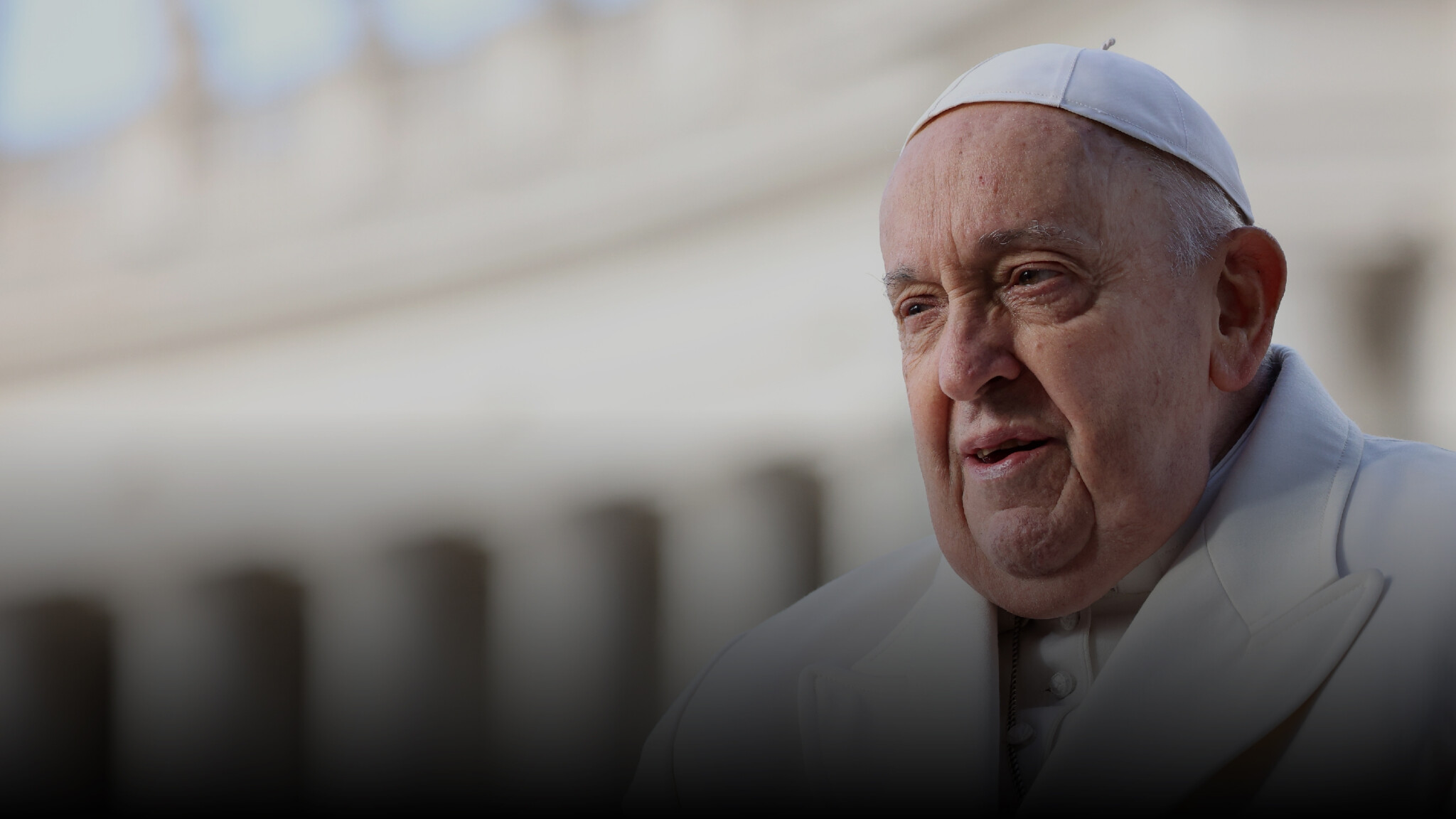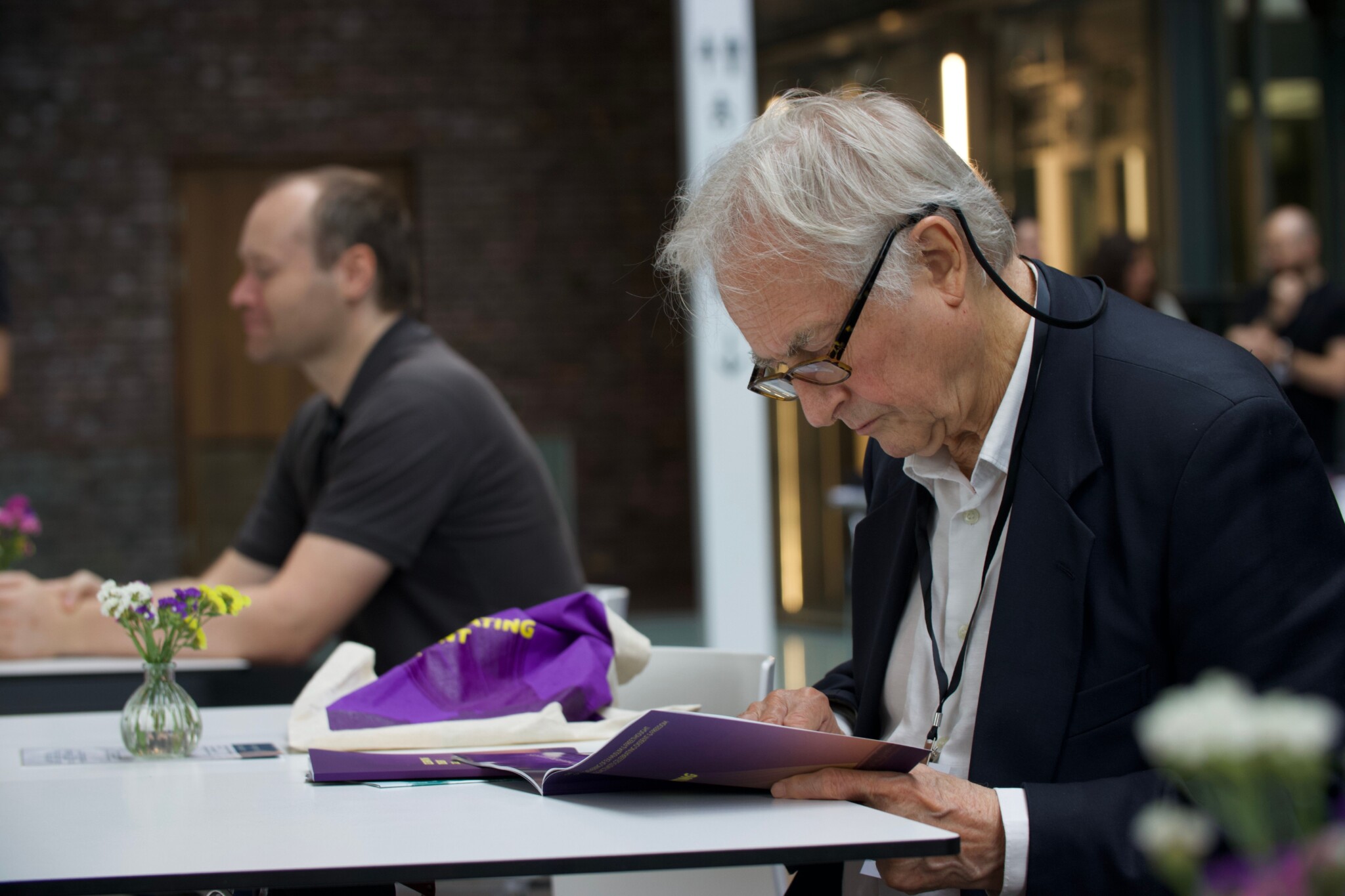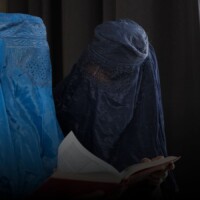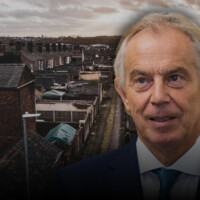
As is customary after the death of any Pope, a slew of carefully airbrushed eulogies has emerged, dutifully praising Pope Francis as a humble reformer and darling of the progressive elite. But strip away the hagiography, and what remains is a legacy of division and disorientation in the Catholic Church.
To the secular left, Francis was the acceptable face of Catholicism—vaguely spiritual, ideologically convenient, and endlessly quotable on climate change and immigration. But to many faithful Catholics—especially traditionalists—he was a figure of profound confusion and contradiction. Beneath his carefully cultivated image of pastoral compassion lies an astonishing record of protecting, promoting, and rehabilitating some of the most morally compromised men in the Church.
Enjoy independent, ad-free journalism - delivered to your inbox each week
Even as recently as last month, he stood accused of actively covering up abuse, with The Telegraph naming six Cardinals—two of whom are reportedly papabile—who have serious questions to answer about enabling or ignoring clerical abuse. This is not a question of negligence. It is a question of moral complicity.
Contrast this with Pope Benedict XVI, a man vilified for his orthodoxy and intellectual rigor, yet uncompromising when it came to rooting out abusers. Benedict did not shield monsters; he removed them. Francis, by contrast, seemed more interested in shielding his allies—even when those allies had been credibly accused of heinous crimes.
Perhaps the most grotesque example is that of Marko Rupnik, the Slovenian priest excommunicated in 2022 after it emerged he had abused women and nuns in the 1990s. Francis not only lifted the excommunication but reinstated him, despite a damning investigation by his own order, the Jesuits. Only after a public outcry of such magnitude that it could no longer be ignored did Francis agree to lift the statute of limitations and allow the case to be reopened. It was a reluctant concession, not a righteous one.
In the United States, the rot continued. Francis chose to elevate Cardinal Robert McElroy to one of the most prominent sees in America—Washington, D.C.—despite longstanding allegations that McElroy had helped to cover up abuse committed by the disgraced former Cardinal Theodore McCarrick. McCarrick, now laicized, escaped prison only because of his advanced senility, not his innocence.
Help Ensure our Survival
And then there is Francis’s personal vindictiveness—his readiness to crush dissent not through reasoned argument, but through clerical retribution. In November 2023, he evicted retired Cardinal Raymond Burke from his Vatican apartment and stripped him of his salary. Burke’s great crime? Daring to question Francis’s theological ambiguity and liturgical innovations. No dialogue. No charity. Just cold, authoritarian score-settling.
This is not the reforming Pope the media wants to remember. This is the legacy of a man who weaponized mercy to protect allies and silenced critics in the name of tolerance. It is time to tell the truth.
Like every other major institution in the West, the Catholic Church is under relentless attack from radical ideologues hell-bent on enforcing the diktats of woke politics. These assaults, often couched in moralistic rhetoric, demand that Churches abandon doctrine and bow before the new orthodoxy—particularly on issues such as female clergy and sexual ethics. And yet, rather than meet these demands with a robust, unapologetic affirmation of liturgical and theological tradition, too many Church leaders capitulate, as though Christianity itself must now participate in a Maoist self-criticism ritual.
What these leaders fail to grasp, or refuse to admit, is that these attacks are not motivated by sincere concern. They are not pleas for reform; they are instruments of power. The goal is not to improve the Church but to dismantle it—along with every pillar of Western civilization—by branding its moral framework as corrupt and obsolete. We see the same playbook applied now to the Supreme Court, after it dared to reaffirm the biological definitions of “man” and “woman” within the Equality Act 2010. Any deviation from the new secular creed is met with outrage, not argument.
Churches in the Anglosphere—particularly in Europe, Canada, Australia, and New Zealand—are especially exposed. Unlike the United States, where theism retains cultural weight, these countries have spent decades ripping Christianity out of public life. In Britain, we replaced religious education with the vapid, synthetic concept of “British values”—a term so rootless and politically malleable that it could mean anything from tea and tolerance to drag queens in primary schools. The result? Two generations who haven’t the faintest clue what Christianity is, yet feel oddly confident in denouncing it.
Hence the confusion and inanity of contemporary criticisms: Christ is misrepresented as a first-century flower child—blame Vatican II and the ’60s for that—and the loudest voices are atheist comedians like Ricky Gervais, whose mockery of Christianity is only matched by his conspicuous silence on Islam. Or the New Atheist cohort—Dawkins, Hitchens, et al.—whose crusade against religion was always more cultural than intellectual.

Dawkins mocks Christianity yet clings to its culture—exposing a self-contradictory stance more rebellious than rational.
Take Richard Dawkins, for instance, a man who has spent his career tilting at a caricature of Christianity while displaying a philosophical naïveté so glaring that the late philosopher Mary Midgley once noted he couldn’t survive a first-year philosophy seminar. And yet, in a moment of extraordinary incoherence, Dawkins now claims to enjoy living in a “culturally Christian” society—apparently without realizing that such a culture cannot exist without Christianity itself. His whole stance smacks of a prolonged adolescent tantrum—less “reasoned secularism” and more “screw you, Dad” projected onto God.
So, the Church is being held to account by critics who scorn it, demanding adherence to “Christian values” they’ve misdefined and misappropriated, and with the death of Pope Francis we are, once again, subject to the opinions and commentary of that ilk. But it’s also again, lifted the lid on a facet of British culture I thought we had pretty much put behind ourselves: sectarianism and, specifically, anti-Catholic sectarianism.
Like many British people, my ancestry is a mostly a mix of Celtic, Norse, and Anglo-Saxon, and the faith of those in the family tree reflects the political realities of the times those people lived in. For example, my Great Grandfather was an Ulster Orangeman and a Temperance Minister, whereas my mother is descended from the older brother of William Holt S.J., the Jesuit Priest who, in the 1580s, was Philip II’s chief agent in his plots to remove Elizabeth I from the throne of England. I mention this because many “indigenous” British people carry these scars from our history.
I was raised in Scotland as a Scottish Episcopalian—one of the “Piscys”, the Anglican remnant that remained when the Church of Scotland lurched fully into Presbyterianism. We were the Church of Charles I, the Church of the Jacobites, the Church of a certain type of Scottish establishmentarian—the ones who kept their Edinburgh accents intact and their liturgies High. But for all the tradition in our pews, Roman Catholicism was an alien force.
Growing up in the prim, east-windy, west-endy world of New Town Edinburgh, the Catholic Church was as foreign to us as voodoo. In my elite, all-boys Edinburgh day-school, circa 1978, we had two Pakistani boys in a group of over 200 pupils—but not a single Catholic. When a Spanish boy arrived a couple of years later, he was treated like some sort of exotic import. The Church of Scotland reigned supreme, and even my Episcopalian roots made me something of a curiosity.
And while the east was genteel, the west of Scotland seethed with sectarianism. Glasgow, in particular, was poisoned by it. When Mo Johnston, a former Celtic striker and open Roman Catholic, signed for Rangers in 1989, the outrage was volcanic. Yes, technically there had been Catholics at Rangers before but never like this. Johnston was high-profile, visible, and symbolic. Chairman David Murray stood firm, and with that, a crack opened in the edifice of sectarianism. For once, the bigots were on the back foot.
But don’t be fooled into thinking it vanished overnight. In 1995, I was working in recruitment in Edinburgh—liberal, progressive Edinburgh—and discovered the stench of sectarianism hadn’t gone far. A client flat-out refused to offer a job to a qualified candidate, purely because he was Catholic. That was less than thirty years ago. And it wasn’t unusual.
When anti-racism movements began to gain traction in Scotland, many rightly pointed out that while racism was comparatively rare, sectarian hatred was our homegrown poison. It still is. But what I hadn’t expected—what still startles me—is just how deeply anti-Catholicism still runs in English society. Often it masquerades as secularism, liberalism, even intellectualism—but scratch the surface and there it is, ingrained, smug, and utterly unexamined. The same people who would denounce Islamophobia in a heartbeat will sneer at Catholicism with impunity, unaware (or uncaring) that they’re parroting centuries-old propaganda.
The same people who would denounce Islamophobia in a heartbeat will sneer at Catholicism with impunity, unaware (or uncaring) that they’re parroting centuries-old propaganda.
This is the long shadow of the Reformation. After the Armada failed in 1588, England went into paranoid overdrive. Catholicism wasn’t just heresy—it was treason. Recusants were fined into poverty, priests were hunted down and executed. We were all taught, ad nauseam, about Bloody Mary. But the names of the Catholic martyrs? Almost entirely erased. Had it not been for the tireless work of the Catholic Record Society, the stories of men, women, and children tortured for the crime of receiving the sacraments would have been lost completely.
Thanks in no small part to Jesuit William Holt, Catholicism became synonymous with sedition, even though, ironically, after 1588 Holt was removed and the Church adopted a posture of prayer, not war. The Jesuits themselves took a softer line. England, they said, was to be converted through patience and example, not the sword. But it was too late. After the Gunpowder Plot—a disaster for English Catholics—the Pope publicly condemned the conspirators. The official position of the Church was not revolution. But England wasn’t listening.
By the mid-1600s, English Catholicism had been crushed—reduced to a few recusant families clinging to their faith in manor houses or hiding in remote corners like Northumberland. The 1780 Papists Act, which sought to lift just some of the restrictions, triggered the Gordon Riots—the most violent insurrection in British history. That’s how deep the hatred ran. Catholics couldn’t vote, couldn’t serve, couldn’t hold office. Only in 1829, after mounting pressure and unrest, did Parliament finally pass the Catholic Emancipation Act, thanks, ironically, to the Duke of Wellington and Sir Robert Peel, both of whom had originally opposed it.
The tide began to turn—not just legally, but spiritually. The conversion of John Henry Newman, one of Anglicanism’s greatest minds, was a seismic moment. He didn’t just convert; he dragged much of England’s intellectual elite back to Rome with him. He became Saint John Henry Newman, and a symbol of Catholicism’s quiet resurgence.
And now, in 2025, that resurgence has become impossible to ignore. The Church of England and the Kirk are hollowing out, reduced to heritage sites with vestments. Meanwhile, the Roman Catholic Church is growing. At Easter, Westminster Cathedral welcomed 500 converts, and thousands more across the country joined them. These weren’t immigrants or foreign nationals. These were secularized young Britons, returning to something deeper than activism and NHS rainbows. These were Protestants who’d grown tired of church-lite moralism, and sought the rootedness, beauty, and seriousness of Rome.
At Easter, Westminster Cathedral welcomed 500 converts, and thousands more across the country joined them. These weren’t immigrants or foreign nationals. These were secularized young Britons, returning to something deeper than activism and NHS rainbows. These were Protestants who’d grown tired of church-lite moralism, and sought the rootedness, beauty, and seriousness of Rome.
Even Pope Francis, the so-called “woke Pope”, hasn’t stopped the momentum. In fact, in some ways, he’s unwittingly clarified what real Catholicism isn’t. Because despite all the confusion, people are still coming. They’re coming because they’ve realized that man cannot live on bread alone, and that the sacraments matter more than slogans. Today, the Roman Catholic Church isn’t just surviving in Britain, it’s thriving. It is now the largest active Christian denomination in the country. In weekly attendance, it doubles the Church of England.
Catholicism, long despised, long dismissed, is rising from the ruins. And those who sneered at it for centuries are suddenly finding they have far less to sneer at than they thought.
So why, despite Pope Francis and his thinly veiled attempts to turn the Barque of Peter into an NGO with incense, is the Catholic Church nevertheless attracting disillusioned Anglicans in increasing numbers? The answer is spiritual, yes, but also painfully political. It is something few outside the faith will fully grasp: that Christ’s radical love of the sinner never once extended to an indulgence of sin. That distinction has been lost in the Church of England, which now finds itself rudderless, a once-noble vessel holed below the waterline by decades of political accommodation and theological cowardice.
Let us not forget: the Church of England was forged out of political convenience, and it is now dying by the same sword. Its final undoing isn’t persecution, but irrelevance—death by a thousand synods. And while the former Archbishop of Canterbury floundered through the moral debates of our age with the air of a bewildered civil servant, the Roman Catholic Church has something the Anglican Communion tragically lacks: the Magisterium, the theological spine that guards against trend-chasing and doctrinal whimsy. One man—even one Pope—cannot reinvent Catholicism to suit his politics, however hard some have tried.
Enter Pope Benedict XVI—Joseph Ratzinger—the great theological sentinel of our time. He understood what many of his contemporaries dared not say: that Anglicanism was not being abandoned by the people, but that it had abandoned them. He saw that many within Anglicanism yearned for Rome, but hesitated because they feared sacrificing the deep beauty of their liturgical and musical tradition—ironically, Anglicanism’s single greatest contribution to global Christianity.
Ratzinger’s response was masterful. With a pastoral and strategic eye, he founded the Ordinariate of Our Lady of Walsingham, a bridge for Anglicans crossing the Tiber who wished to keep their liturgy, prayers, and choirs intact. It was a gesture of profound respect for their tradition and a recognition of the deep unity possible between truth and beauty. Not surprisingly, the Ordinariate attracted those of a traditional mind: the very people Pope Francis’s pontificate seemed intent on alienating. It’s little wonder momentum has quietly stalled. After all, these converts are not the pliant sort; they carry into Catholicism a Protestant legacy of bold, vocal engagement. And it is precisely that engagement that is helping to reawaken the Catholic laity, especially in places like England—less so, notably, in Ireland.
I speak from experience. My own conversion was not born of sentimentality or aesthetic preference, but of a painful and necessary reckoning with the truth. Like many others raised in Protestant Britain, I had inherited the prejudices of my culture without examining them. I had been a Catholic in all but name—and when I finally stepped into the Church, I saw not an alien institution, but home. In Northumberland, where I now live, Catholicism is not a foreign creed; it is buried but not broken, suppressed for centuries but rising now from the soil like a long-dormant seed.
My own conversion was not born of sentimentality or aesthetic preference, but of a painful and necessary reckoning with the truth. Like many others raised in Protestant Britain, I had inherited the prejudices of my culture without examining them. I had been a Catholic in all but name—and when I finally stepped into the Church, I saw not an alien institution, but home.
The death of Pope Francis will close a turbulent chapter. His successor will determine much: the tone, the posture, the pace of the Church in the coming decades. Under Francis, traditional Catholics were smeared, exiled, and silenced, while progressives strutted across the sanctuary, rewriting doctrine with the arrogance of technocrats. But, as always, the pendulum swings. The Church has outlived emperors, heretics, revolutionaries, and Anti-Popes. It has buried kings and crowned saints. It has survived corruption, cowardice, and crisis. It will survive this too.




Comments (0)
Only supporting or founding members can comment on our articles.